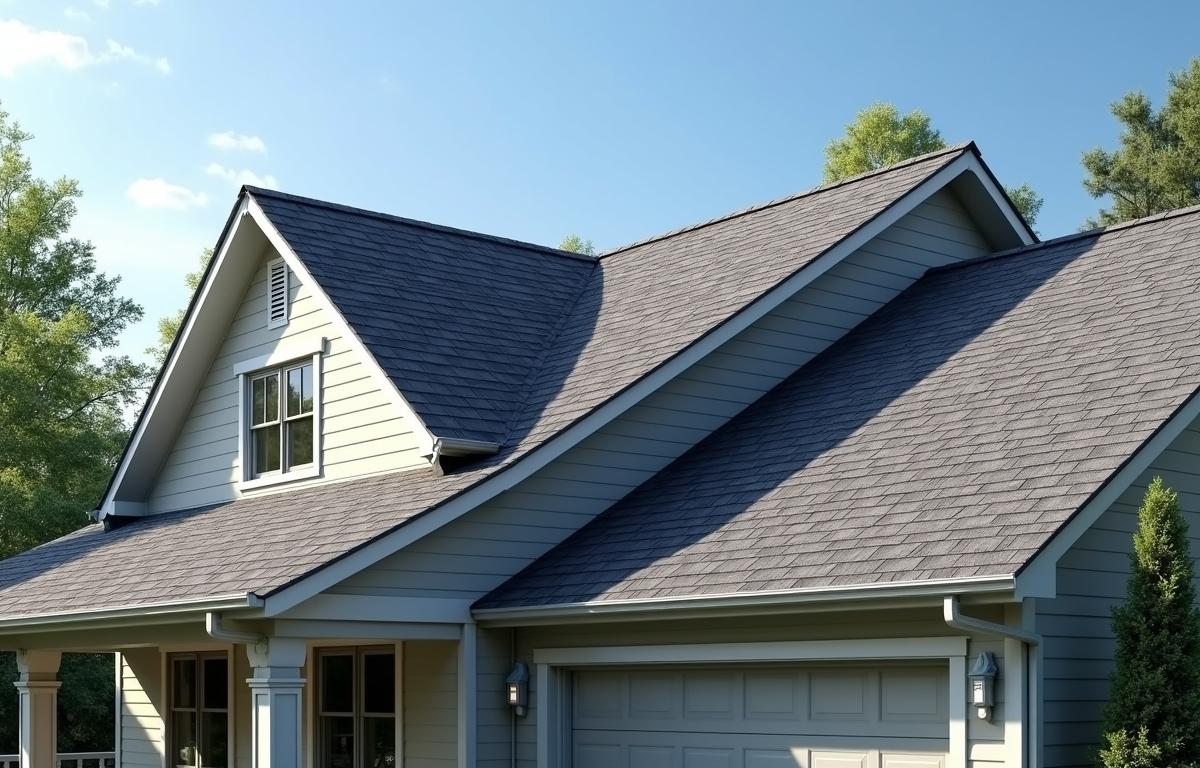In modern home design, the roof does far more than protect against the elements—it defines the character of the entire structure. As the demand for sleek, functional, and sustainable living spaces grows, the roof styles used in modern residential architecture have become more creative and intentional than ever before.
From dramatic silhouettes to practical forms that support green technology, today’s roofing trends reflect the values of homeowners and designers alike. Below, we explore five standout roof types that not only enhance the visual appeal of a modern house but also work seamlessly with innovative floor plans, energy efficiency goals, and contemporary lifestyles.
Why Roof Style Matters in Modern Architecture
The roof is a critical architectural feature, especially in the context of residential modern architecture. Beyond aesthetics, it impacts insulation, ventilation, drainage, and even the structural footprint of a home. A well-chosen roof style can elevate the entire look of your home, support eco-conscious living, and align with the flow of your interior house plans.
Many modern residential architecture firms design with rooflines in mind from the start, using them to create harmony between indoor and outdoor spaces. Whether you’re working on a new build or refining an existing home, understanding the best roof styles can help bring your design vision to life.
1. Flat Roofs: Sleek, Functional, and Modern
Flat roof types are a hallmark of modern houses, often seen in minimalist or industrial-inspired builds. Their clean horizontal lines create a sharp contrast with surrounding natural landscapes, helping the structure appear more grounded and geometric.
But flat roofs aren’t just about looks—they offer practical benefits too. They provide usable space for rooftop patios, green roofs, or solar panels, which align with the sustainability goals of many modern residential architecture projects. Because they require fewer materials and are easier to construct than pitched roofs, they’re also cost-effective and space-efficient.
This roof style pairs beautifully with open floor plans and large windows, promoting a seamless flow of light and air. It’s ideal for urban homes or desert retreats where simplicity and functionality are key.
2. Shed Roofs: Dynamic Angles with a Light-Filled Edge
Shed roofs, also known as single-slope or mono-pitch roof types, are gaining popularity in modern residential architecture circles. Featuring a single angled plane, these roof styles offer a unique silhouette that naturally invites sunlight and enhances ventilation.
Their asymmetrical design complements unconventional house plans and allows for creative window placement, particularly along the high side of the slope. This makes them a favorite for homes in wooded or mountainous areas where natural light is at a premium.
Residential architecture firms often incorporate shed roof styles into passive solar designs, allowing for energy efficiency and rainwater harvesting. They’re practical, bold, and a great fit for modular or eco-friendly builds.
3. Butterfly Roofs: Bold Shapes Meet Sustainability
Looking for something dramatic? The butterfly roof is an unmistakable V-shaped design with two planes sloping inward, resembling outstretched wings. Once popular in mid-century homes, this roof style has made a comeback in modern residential architecture thanks to its futuristic look and eco-friendly potential.
Butterfly roof styles are ideal for rainwater collection, making them a smart choice for homes with sustainability at their core. They also create high interior ceilings and allow clerestory windows to flood the space with light.
Among different roof styles, butterfly roofs stand out as a bold architectural statement. They’re often seen in luxury desert homes or coastal builds where climate-conscious design matters just as much as aesthetics.
4. Gable Roofs: A Modern Twist on a Classic Profile
The gable roof is one of the most recognizable types of roofs—two sloping sides that meet at a ridge to form a triangular shape. While commonly associated with traditional types of houses, gable roof styles are also being reimagined for modern design.
By tweaking proportions, materials, and pitch, architects can transform a classic gable into a sleek and contemporary feature. For example, incorporating metal roof styles like standing seam steel can modernize the appearance while boosting durability.
Gable roofs are especially effective in barn roof styles, where rustic form meets upscale finishes. Their steep slope makes them ideal for shedding snow and rain, making them both beautiful and practical in colder climates.
5. Hip Roofs: Balanced, Resilient, and Elegant
Hip roofs have slopes on all four sides, meeting at a peak or ridge. This balanced design makes them one of the most stable roof types, especially in regions prone to high winds and storms.
In modern residential architecture, hip roof styles are often used to create symmetry and a low-profile silhouette that blends with the surrounding landscape. They can be paired with extended eaves, skylights, or metal roof styles for a refined modern look.
Hip roofs also offer greater coverage around the home’s perimeter, providing natural shade and protection—an important feature for warm-weather builds and open-concept floor plans.
Conclusion
When it comes to designing a modern house, the roof is more than a finishing touch—it’s a defining element of the architectural style. From minimalist flat roofs to expressive butterfly designs, each roof style plays a unique role in shaping the overall aesthetic, function, and sustainability of your home.
